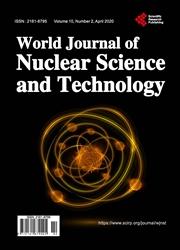Assessment of Exposure Due to Technologically Enhanced Natural Radioactivity in Various Samples of Moroccan Building Materials
引用次数: 10
Abstract
The aim of our present work is to measure the specific activities of the radionuclides 226Ra, 232Th, 40K and the exhalation rates in terms of area and mass of 222Rn in some samples of building materials commonly used in Morocco in order to evaluate the radiological risk caused by natural radioactivity. To this end, the analyses were carried out, using two nuclear techniques, namely high resolution gamma spectrometry and alpha dosimetry based on the use of LR115, on 50 samples collected from large commercial suppliers in Morocco. The results of these analyses show that the average specific activities of 226Ra, 232Th and 40K in these materials vary from 9 to 52 Bq/kg, 3 to 63 Bq/kg and 68 to 705 Bq/kg respectively. These activities remain within the permissible limits of 35 Bq/kg, 30 Bq/kg and 370 Bq/kg respectively, with the exception of a few samples of red brick, gray cement, ceramic and granite. The activity of the radium equivalent (Raeq), the internal (Hin) and external (Hex) hazard indices, the absorbed dose rate, the total annual effective dose , the excess lifetime cancer risk (ELCR) as well as volumic activities, exhalation rates in terms of area (ES) and mass (EM) are calculated for the samples analyzed in this work in order to assess the radiological risks resulting from the use of these materials in various construction activities. It seems that the values of these indices vary from 19 to 196 Bq/kg, 0.08 to 0.67, 0.05 to 0.53, 9 to 91 nGy/h, 0.05 to 0.56 mSv/y, 0.19 × 10−3 to 1.96 × 10−3, 72 to 350 Bq/m3, 56 to 273 mBq⋅m−2⋅h−1 and 3 to 15 mBq⋅kg−1⋅h−1 respectively. The lowest values are identified for gypsum, while the highest are attributed to granite. All of the obtained results of these indices respect the permissible limits except for the Raeq in some granite samples, the ELCR index in all samples except gypsum and the radon volumic activity in some gray cement samples, ceramic and granite. As a result, the different types of building materials analyzed in our work do not present a health risk to the public and can be used in various construction activities, with the exception of a few samples of red brick, gray cement, ceramic and granite. The choice of the use of red brick, gray cement and ceramic should be monitored and adapted according to the criteria of the limitation of the doses whereas the use of the granite must be moderate in order to limit over time the health risk which increases with the duration of exposure of humans to these building materials.评估摩洛哥各种建筑材料样品因技术增强的天然放射性而受到的照射
我们目前工作的目的是在摩洛哥常用的一些建筑材料样品中测量放射性核素226Ra、232Th、40K的具体活动以及222Rn的面积和质量的呼出率,以评估天然放射性引起的辐射风险。为此目的,对从摩洛哥大型商业供应商收集的50个样品进行了分析,使用了两种核技术,即高分辨率伽马能谱法和基于LR115的α剂量法。结果表明,226Ra、232Th和40K的平均比活度分别为9 ~ 52 Bq/kg、3 ~ 63 Bq/kg和68 ~ 705 Bq/kg。除了少数红砖、灰水泥、陶瓷和花岗岩样品外,这些活动仍分别在35、30和370 Bq/kg的允许范围内。为了评估在各种建筑活动中使用这些材料所造成的辐射风险,本文计算了所分析样品的镭当量活度(Raeq)、内部(Hin)和外部(Hex)危害指数、吸收剂量率、年总有效剂量、过量终身癌症风险(ELCR)以及体积活度、面积(ES)和质量(EM)方面的呼气率。这些指标的取值范围分别为19 ~ 196 Bq/kg、0.08 ~ 0.67、0.05 ~ 0.53、9 ~ 91 nGy/h、0.05 ~ 0.56 mSv/y、0.19 × 10−3 ~ 1.96 × 10−3、72 ~ 350 Bq/m3、56 ~ 273 mBq⋅m−2⋅h−1和3 ~ 15 mBq⋅kg−1⋅h−1。石膏的值最低,花岗岩的值最高。除部分花岗岩样品的Raeq值、石膏样品的ELCR值和部分灰水泥、陶瓷和花岗岩样品的氡体积活度外,其余指标均在允许范围内。因此,除了少数红砖、灰水泥、陶瓷和花岗岩样本外,我们在工作中分析的不同类型的建筑材料不会对公众构成健康风险,可以用于各种建筑活动。红砖、灰水泥和陶瓷的使用应根据剂量限制标准进行监测和调整,而花岗岩的使用必须适度,以便随着时间的推移限制随着人类接触这些建筑材料时间的延长而增加的健康风险。
本文章由计算机程序翻译,如有差异,请以英文原文为准。
求助全文
约1分钟内获得全文
求助全文

 求助内容:
求助内容: 应助结果提醒方式:
应助结果提醒方式:


